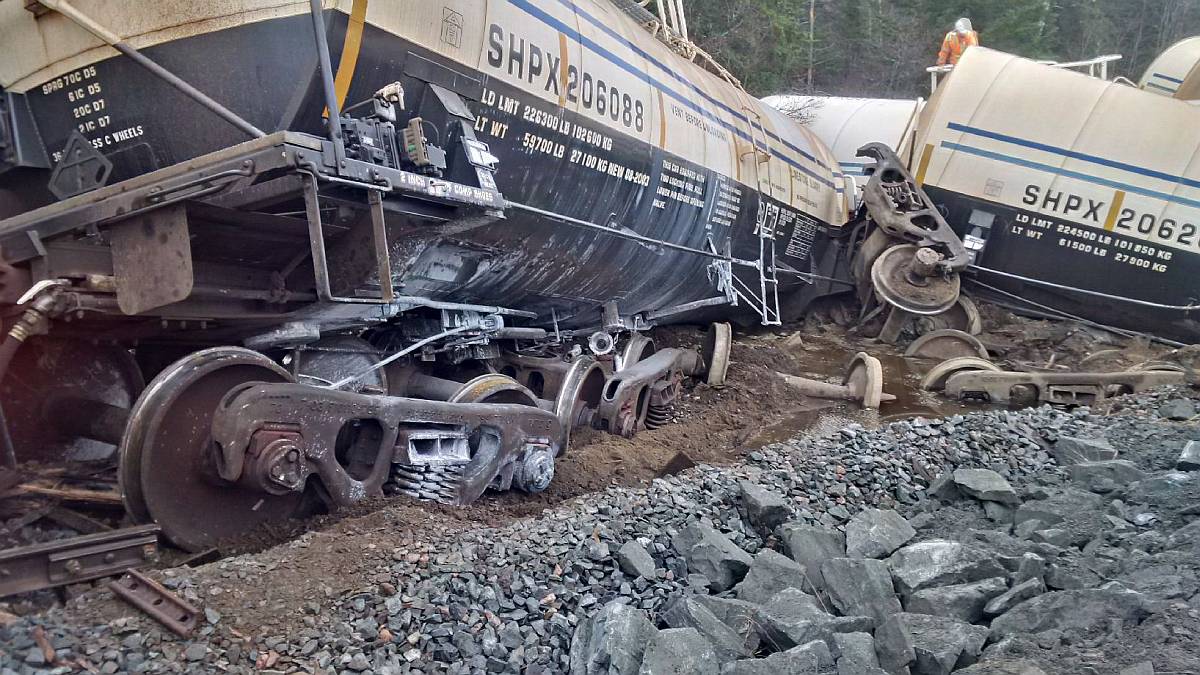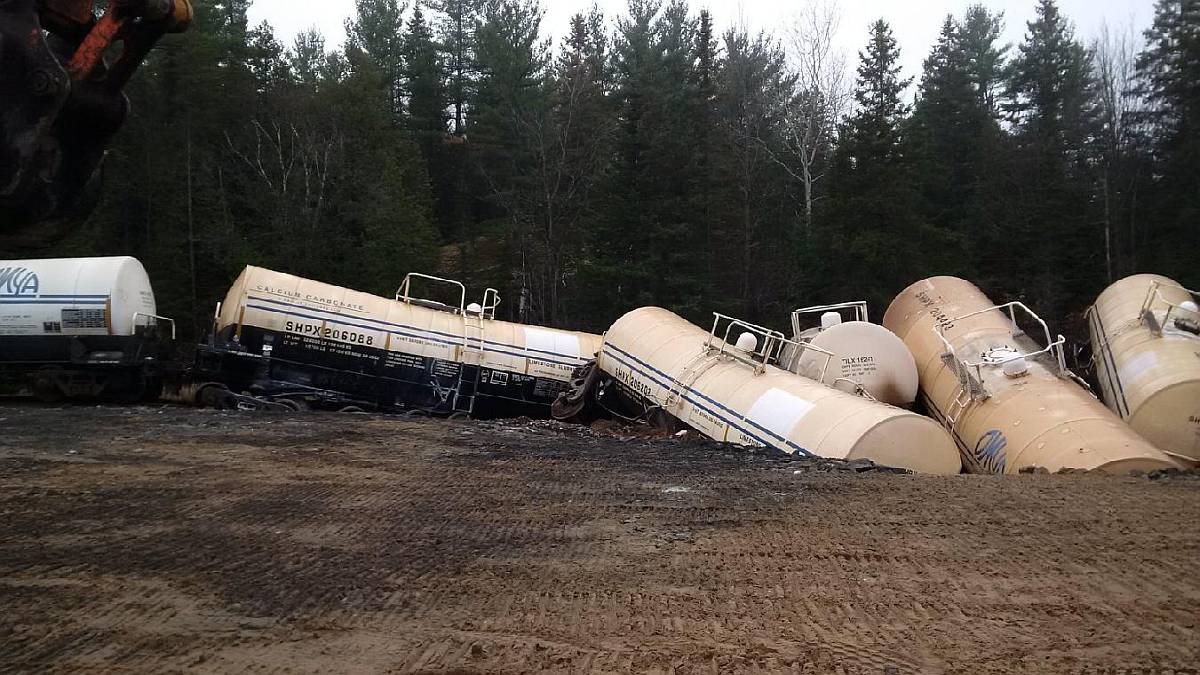Main-track derailment
Huron Central Railway
Freight train SUSM-01
Mile 72.08, Webbwood Subdivision
Spanish, Ontario
The occurrence
On , at approximately 2250 Eastern Standard Time, Huron Central Railway freight train SUSM-01 was proceeding westward on the Webbwood Subdivision at 25 mph when a train-initiated emergency brake application occurred at Mile 72.08, near Spanish, Ontario. Two separate groups of equipment derailed: 3 locomotives and 8 cars on the head end and 5 cars near the middle of the train. Approximately 225 feet of roadbed was destroyed. No dangerous goods were involved and there were no injuries.
Media materials
News release
Poor track conditions and inadequate drainage led to November 2015 derailment of a Huron Central Railway train near Spanish, Ontario
Read the news release
Deployment notice
TSB deploys investigator to train derailment near Spanish, Ontario
In accordance with a Memorandum of Understanding (MOU) with the Province of Ontario, the Transportation Safety Board of Canada (TSB) is deploying an investigator to a derailment involving a Huron Central Railway (HCR) train in Spanish, Ontario. The TSB will gather information and assess the occurrence.
Investigation information
Download high-resolution photos from the TSB Flickr page.
Class of investigation
This is a class 3 investigation. These investigations analyze a small number of safety issues, and may result in recommendations. Class 3 investigations are generally completed within 450 days. For more information, see the Policy on Occurrence Classification.
TSB investigation process
There are 3 phases to a TSB investigation
- Field phase: a team of investigators examines the occurrence site and wreckage, interviews witnesses and collects pertinent information.
- Examination and analysis phase: the TSB reviews pertinent records, tests components of the wreckage in the lab, determines the sequence of events and identifies safety deficiencies. When safety deficiencies are suspected or confirmed, the TSB advises the appropriate authority without waiting until publication of the final report.
- Report phase: a confidential draft report is approved by the Board and sent to persons and corporations who are directly concerned by the report. They then have the opportunity to dispute or correct information they believe to be incorrect. The Board considers all representations before approving the final report, which is subsequently released to the public.
For more information, see our Investigation process page.
The TSB is an independent agency that investigates air, marine, pipeline, and rail transportation occurrences. Its sole aim is the advancement of transportation safety. It is not the function of the Board to assign fault or determine civil or criminal liability.

